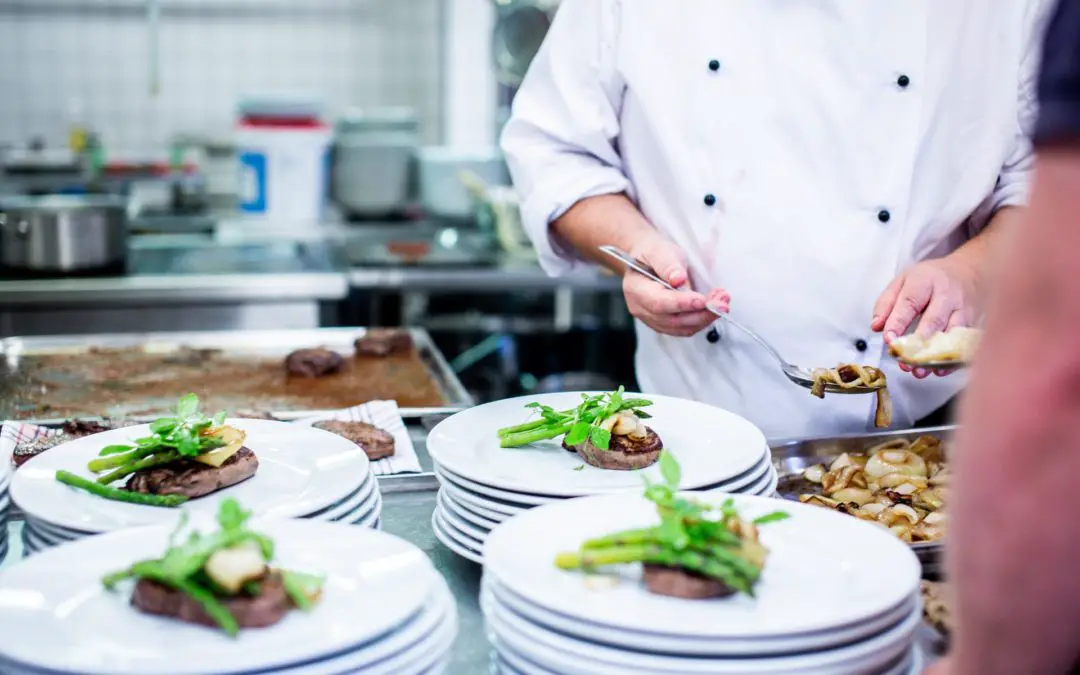To sell a chef microgreens: hand-deliver a free sample that shows off your best products during downtimes, usually between 7am and 10am or 2 pm and 4 pm. Find out what they’re not getting from existing suppliers: quality, consistency, local, organic, consistent delivery, availability. Leave them a fresh sheet, and come back at least once to discuss how they liked the product. Don’t expect them to return calls or emails. Just show up. Have a consistent online presence on social media, and use it to find chefs that align with your brand. Dine at their restaurants and message them about how much you liked their food.
How to sell a chef sprouts and microgreens
The single best thing you can do, is bring in a free sample of your product. Nothing sells microgreens like microgreens. If your product is consistently fresher, keeps longer, tastes great, and comes in at a lower price, you’re bound to succeed eventually.
Show up during downtimes, usually between 7am and 10am and 2pm to 4pm, unless they have a busy breakfast. Be respectful of their time, they’ll notice (and probably won’t talk to you) if you show up during a rush. A rush is the busy time preparing for and cooking the busiest meals of the day. Rushes often happen between 10am and 2pm for lunch, and then 4pm until dinner service cools down.
Have a quick chat and focus the conversation on them. You want to make them aware of your products, but more importantly you want to find out what they’re doing that’s working, and what’s not working:
- How are they using microgreens now?
- Is there anything they want to use but can’t find?
- What are their priorities? Local? Cost? Quality? Organic?
- Are they having trouble getting consistent deliveries of consistent quality?
Don’t expect to make a sale on the first visit. Drop off some free microgreens, ask some questions about their operation, and then leave them with a fresh sheet, and ask if you could stop by again in a few days to a week to get some honest feedback on your microgreens.
Don’t expect them to call you back, even if they say they will. Chefs get busy, and sometimes they’ll say anything to get your out of their kitchen. Stop back in a few times in the future. Chances are it will take at least 2 visits to make a sale.
Don’t get discouraged. Often coming across genuine and upfront about being new goes a long ways. There’s a time element for some sales. Sometimes you’ll introduce yourself to a chef, and they won’t be interested at first, but over time.
Build a consistent online presence
Instagram is very microgreen friendly. Post pictures every day. It’s so easy to generate content with microgreens. Take shots from every angle. Take shots of prepared recipes. Take shots of you holding the greens, the equipment to grow them, the seeds. The possibilities are endless.
Follow as many chefs as you can find in your area on Instagram and other social media platforms. Interact meaningfully with their content and they might even check out your profile. Eat at their restaurants, and message them after telling them how much you enjoyed your meal.
Batching is a great way to save time. Once you have your camera (or cellphone) out, take a ton of pictures all at once. You can bank the best ones for posting later on. If you’re including yourself in your photos, you can even bring a few changes of clothes. Then you can take photos you can post for weeks without looking like you wear the same thing every day.
Make sure your website is easy to find, include it on all your documents and marketing collateral. The sooner you can get a site up the better, sometimes search engine optimization is a waiting game.
What is a fresh sheet?
A fresh sheet is something you can give to chefs so they can order microgreens. It tells then what they can get, when, and for what price.
Fresh sheets often include:
- Price by weight
- Selection of shoots and mixes that are available
- Delivery times
- The date the fresh sheet is valid for (usually the season or year)
- Contact info for getting in touch
Simpler is better. You don’t want to overload a chef with information. Try to keep it to one page, and just the essential info. If you have room, you can highlight new greens you’re trialing, and include photos if it’s something uncommon, but a fresh sample is better!
Thicker paper and ideally laminating it will make them much more likely to keep it around. You can also punch a hole in the corner.
Include a little card or magnet with your contact info that they can stash somewhere.
What do chefs look for in a microgreens supplier?
When you’re building out your offerings for a chef, you have to think about things from their perspective. Any way you can think of to make their job easier is time well spent.
- Quality: The product has to look and taste good. Keep customers coming back.
- Consistency: A close second to quality is consistency. The product has to be consistent quality, and consistently delivered on-time.
- Shelf life: The fresher and more vigorous the microgreen plants are, the longer they’ll keep. Less spoilage keeps costs down.
- Options: If a chef can deal with less suppliers, it’s less work. Be a one-stop shop for their microgreen needs, especially when you’re new and have few customers.
- Timing: Don’t show up when they’re busy during lunch (11am – 2pm) or dinner (4pm – 10pm) rush. Arrange the best delivery schedule for them.
- Deliveries: get in and out of their kitchen fast when delivering. They’ve got work to do. Build a relationship, but do it outside of the kitchen if they’re busy. Offer to take them for a beer.
- New ideas: You don’t want to be patronizing and tell a chef what to put on their menu, but opening them up to new possible ingredients and ways to use them can add value.
- Price per dish: Chefs will build their produce price expectations from a price per dish perspective. They’ll expect to pay more for an ounce of colorful garnish that can do 20 dishes, than for an ounce of salad mix that will do 2.
- Local: Sometimes they place a heavy focus on being as local as possible. It’s usually possible to get a sense for this on their menus and websites. Target these chefs first.
Selling chefs live microgreens
Microgreens that are still growing in the tray have an appeal. Your chef might like the idea of keeping them alive, keeping them fresh longer, and just harvesting what he or she uses.
It can be done, but there are some issues. Soil in kitchen is a contamination risk. If your microgreens are grown in soil, you’re introducing that soil to the kitchen. You can overcome this by growing hydroponically (with hemp mats or similar), but yields are lower, and it’s hard to stay organic.
The other issue is that kitchens are not a good environment for growing. Kitchens can be dark, hot, humid, and ventilation is pretty bad.
When you put all of this together, your microgreens can end up looking pretty bad after a couple of days. Low light will cause greens to stretch. If they miss watering for a day your sprouts will fall over and start to wilt.
It’s kind of counter-intuitive, but cut microgreens last longer than neglected ones that are still in soil.
Logistics of delivering a whole planted tray are also a consideration. They’re heavy, and they need to stay flat during delivery. How are you going to stack them without crushing the plants?
It’s an uphill battle, but it’s not impossible.
When did chefs start using microgreens?
It’s believed that trendy high end chefs in California started using microgreens as garnishes and salads in the late 1990’s and early 2000’s. Certainly there’s a long history of eating young plant shoots, but it’s hard to identify as a commercial phenomenon much before the 1990’s.
Use of microgreens seems to be a growing trend, but I think you and I would be reasonable to expect it to stick around. The cost of microgreens has come down dramatically. So as chefs build it into their repertoire, we can expect more and more restaurants and menus to include it.
You can imagine a chef falling in love with microgreens and working it into the menu at their restaurant. Down the line when they move on to a new restaurant, the old one will likely keep microgreens around, and the chef is likely to bring them into the new restaurant as well.
People are becoming more and more conscious of their health. So they’re willing and able to spend more money on higher quality food. Microgreens are about as fresh and nutrient packed as it gets. They fill a strong and growing demand.
Sources:
https://www.researchgate.net/publication/267354000_Microgreens_Assessment_of_Nutrient_Concentrations
https://www.reddit.com/r/Chefs/comments/43uv0q/chefs_of_reddit_how_do_i_approach_you_about/
https://www.reddit.com/r/Chefs/comments/65tfoo/microgreen_questions_for_a_professional_chef/

I’m Alex Lafreniere. I learned a lot about plants when I built and operated a landscaping company. But, there’s always more to learn. Ever since travelling across the world, I’ve wanted to find ways to bring more tropical and exotic plants into my life. This is the site where I share everything I’ve learned with you.
This site is owned and operated by Plant Hardware, a sole proprietor headquartered in Calgary, Canada. Plant Hardware is a participant in the Amazon Services LLC Associates Program, an affiliate advertising program designed to provide a means for sites to earn advertising fees by advertising and linking to Amazon.com.Plant Hardware may also participate in affiliate programs with Bluehost, Clickbank, CJ, ShareASale, and other sites. Plant Hardware is compensated for referring traffic and business to these companies.

